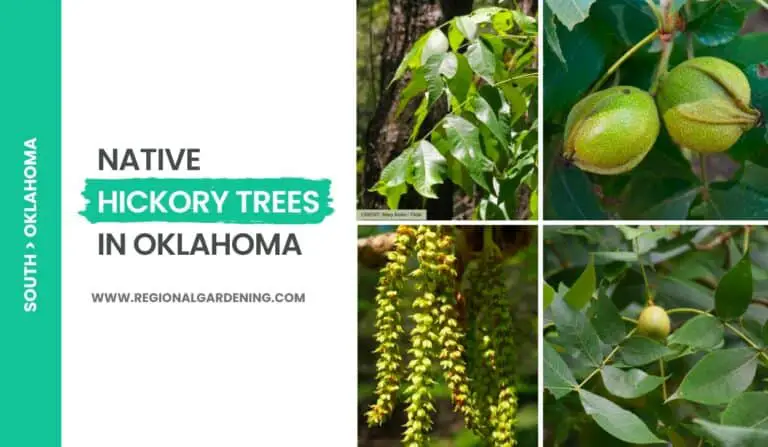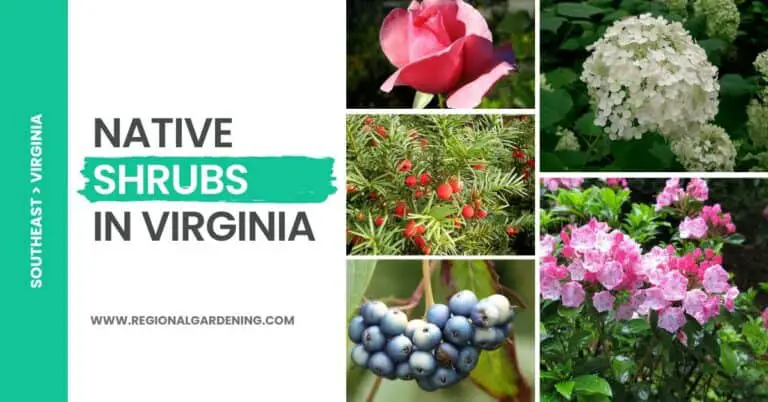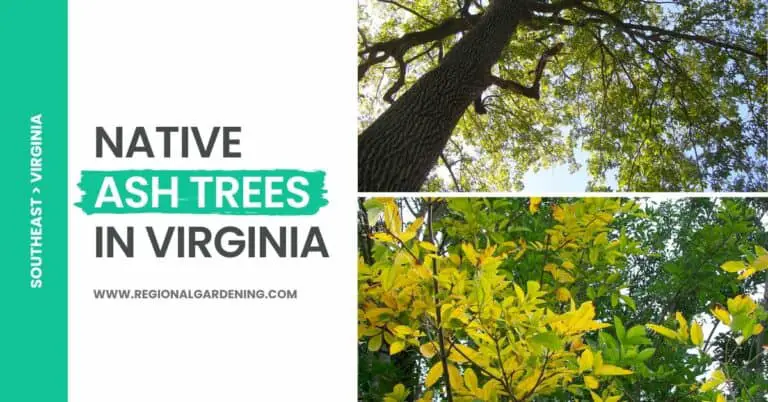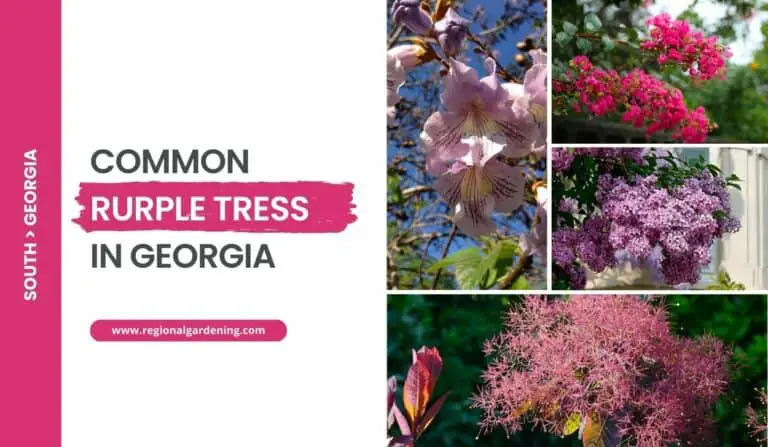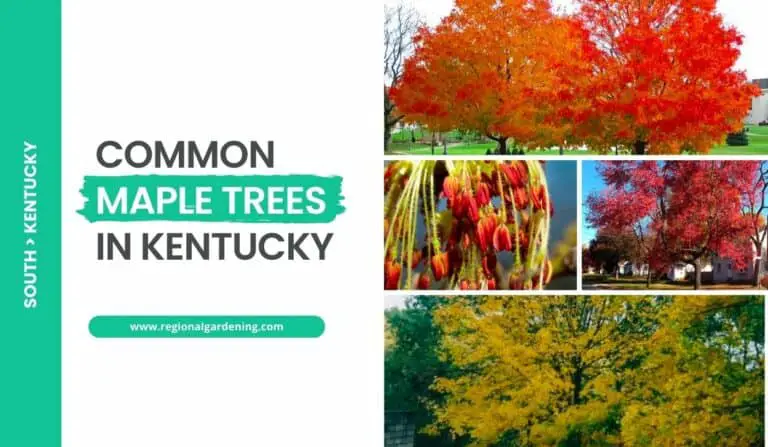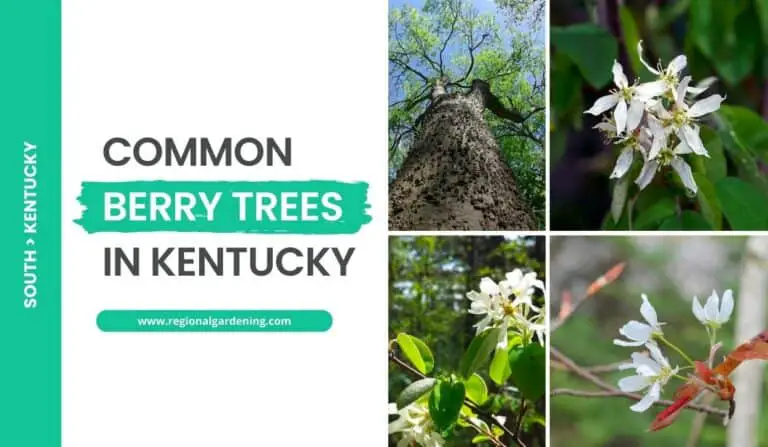Common Locust Trees In Virginia (2 Types You Must Know)
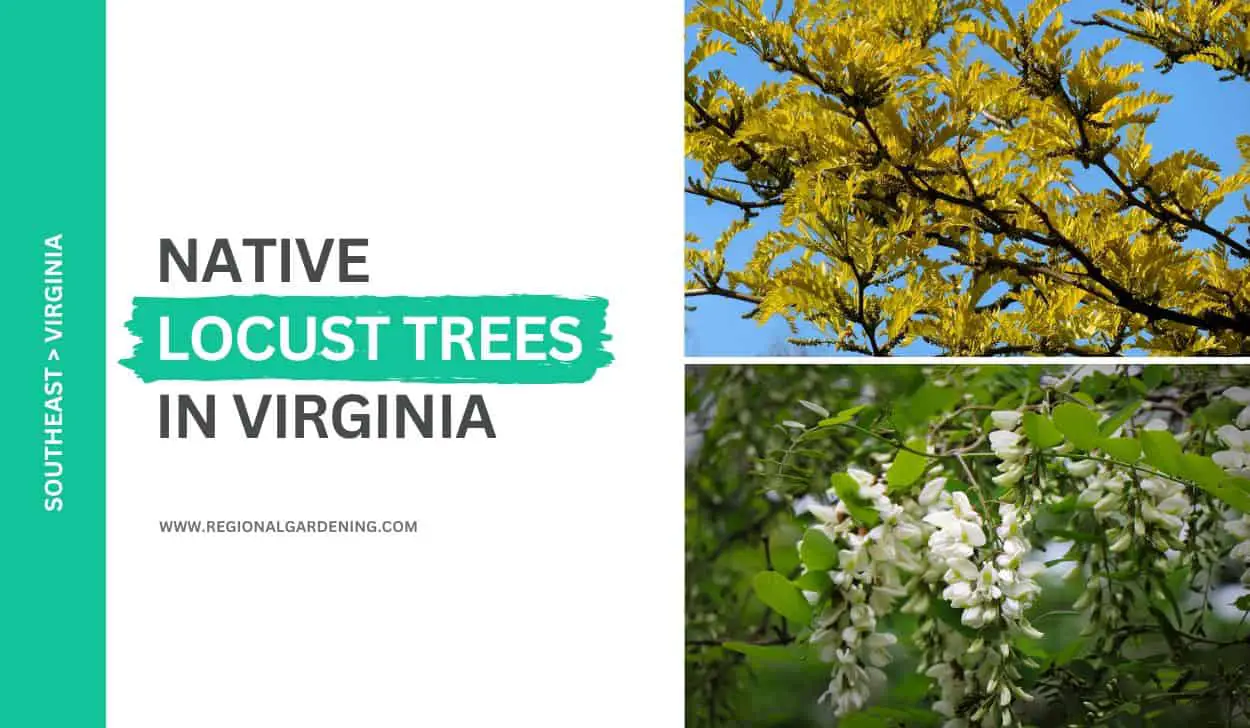
Identifying trees can be an exciting and educational experience, allowing us to appreciate the diverse flora that surrounds us. Locust is one of the least discussed trees. But did you know they make an excellent addition to your collection of ornamental trees?
If you live in Virginia, you’ve probably seen a lot of these trees. To make things easier for you, we’ll concentrate on the two most common locust trees in Virginia: black locust and honey locust.
Let’s get started.
1. Black Locust
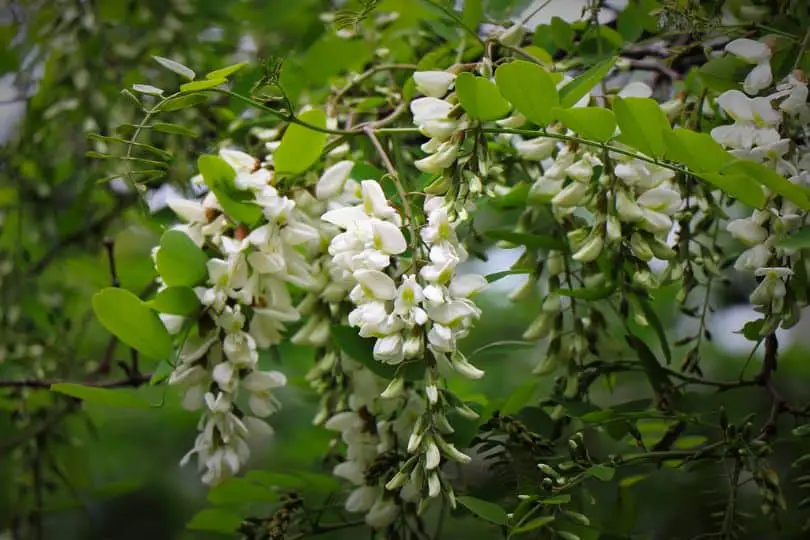
- Common Name: Black Locust
- Scientific Name: Robinia pseudoacacia L.
- Mature Height: 30 to 70 feet tall and 1 to 2 feet in diameter
- Native/Non-Native: Native to the Appalachian region
- Flowers/Cones: Showy, white, pea-like flowers appearing in hanging clusters mid to late spring
- Uses: Wood for poles, fence posts, split rails, and even as decking. Flowers are a source of nectar for honey production.
The black locust tree is a medium-sized tree that can develop thickets by root suckering. It may grow in a range of environments, including disturbed places, but it thrives in damp limestone loams. Black locust leaves are alternating, pinnately compound, and smooth-edged, with 7 to 19 oval leaflets.
The black locust produces four-inch-long pods with four to eight kidney-shaped, red-brown seeds that ripen in the fall. The tree’s bark is fibrous, ridged, and furrowed, resembling a woven rope.
The hardwood of the black locust is resistant to rot and was historically used for many sorts of construction, such as fence posts, poles, and mine timbers, though it is now also utilized for pulpwood and fuel.
Because the plant is a nitrogen fixer, it can aid in the reclamation of mine sites and other disturbed regions. It also supplies valuable food for cottontail rabbits and deer, and the blossoms are an essential source of nectar for honey production.
Although the black locust is a useful tree due to its robustness and utility, it is also a target for many insects and illnesses such as locust borers, leafminers, and heart rot fungus.
Nonetheless, the black locust remains an important resource for a range of uses, as well as a resilient tree that can tolerate a variety of situations.
2. Honey Locust
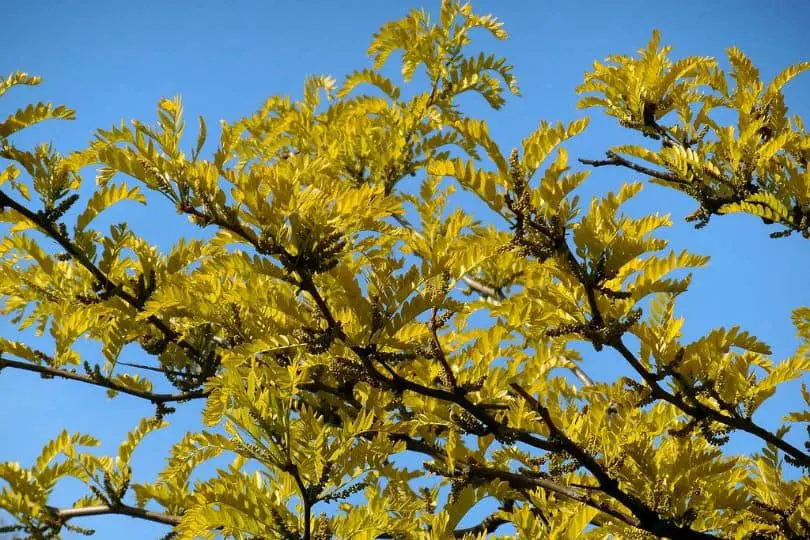
- Common Name: Honeylocust
- Scientific Name: Gleditsia triacanthos L.
- Mature Height: 50 to 80 feet
- Native/Non-Native: Native
- Flowers/Cones: Small, greenish-yellow flowers
- Uses: erosion control, windbreaks, timber, food for wildlife
The honey locust, while not as common as the black locust, is one of the native locust trees in Virginia that you can easily spot while walking in a damp bottomland area or near limestone soil in North America.
This big tree can reach a height of 80 feet and a diameter of 3 feet. It has a short trunk and a broad airy crown of green pinnately compound leaves with up to 30 leaflets.
The Honeylocust tree produces little greenish-yellow flowers in the spring that are not particularly attractive but have a strong smell. If you’re close enough, you’ll be able to smell the flowers even if you can’t see them.
The fruit is the tree’s main distinguishing feature. Honeylocust trees have red-brown, leathery pods that look like rotting banana peels and grow to be 6 to 8 inches long. Don’t let appearances fool you, though; the pods contain a lot of oval, glossy, dark brown seeds that birds and other wildlife enjoy eating.
This tree’s bark ranges from gray-brown to bronze and is initially smooth before breaking into long, narrow, curled plates. It’s also covered in branching thorns, which early settlers used as pins.
The wood of the Honey locust tree is coarse-grained, robust, and sturdy. It’s commonly used for fence posts and crossties, but it’s not as long-lasting as black locusts.
Honeylocust is an excellent tree for erosion control and windbreaks because it can withstand harsh growing conditions. Thornless cultivars are commonly planted in urban areas to help reduce pollution.
Common Locust Trees In Virginia – Frequently Asked Questions (FAQs)
In this section, I will answer some of the frequently asked questions about locust trees in Virginia. Since locust trees are not that popular, these questions have very few credible answers online.
Are there locust trees in Virginia?
There are locust trees in Virginia. The black locust (Robinia pseudoacacia) is the most common locust tree in Virginia. It is a deciduous tree that is indigenous to the southeastern United States, including Virginia. The fragrant white flowers that bloom on black locust trees in late spring or early summer, as well as their distinctive compound leaves, set them apart. It can be found in a variety of habitats across Virginia, including forests, fields, and roadside ditches.
The honey locust is the second most common locust tree in Virginia after the black locust.
What are the uses of locust trees in Virginia?
Locust trees in Virginia, particularly the black locust, serve several functions. Their strong and durable wood is highly valued for fence posts, railroad ties, outdoor furniture, and construction. Locust trees are frequently used in landscaping projects to provide shade, windbreaks, and attractive flowers that attract pollinators. They aid in erosion control due to their extensive root systems, making them suitable for land reclamation and preventing soil loss along riverbanks and slopes. Furthermore, locust trees provide habitat and food for wildlife, and their nectar-rich flowers aid in honey production. However, to avoid negative effects on native ecosystems, their potential invasiveness should be carefully managed.
Are honey locust trees native to Virginia?
Yes, honey locust trees are native to Virginia. However, they are not as common as black locusts in the state.
Similar Articles
- 14 Common Native Oak Trees In Virginia
- 6 Purple Trees In Virginia
- 4 Common Native Hickory Trees In Virginia
- 5 Common Native Maple Trees In Virginia
- 3 Common Cedar Trees In Virginia
- 3 Common Birch Trees In Virginia
- 8 Native Pine Trees In Virginia
- 9 Common Nut Trees In Virginia
- 3 Native Elm Trees In Virginia
- 2 Native Ash Trees In Virginia
- 7 Native Evergreen Trees In Virginia
- 8 Native Flowering Trees In Virginia
- Common Palm Trees In Virginia
- 6 Pink Flowering Trees In Virginia
Sources
The Regional Gardening team makes sure that the information in our articles is accurate by only using sources that are known to be trustworthy. Some of these sources are peer-reviewed journals from government agencies, well-known universities, and scientific research organizations.


